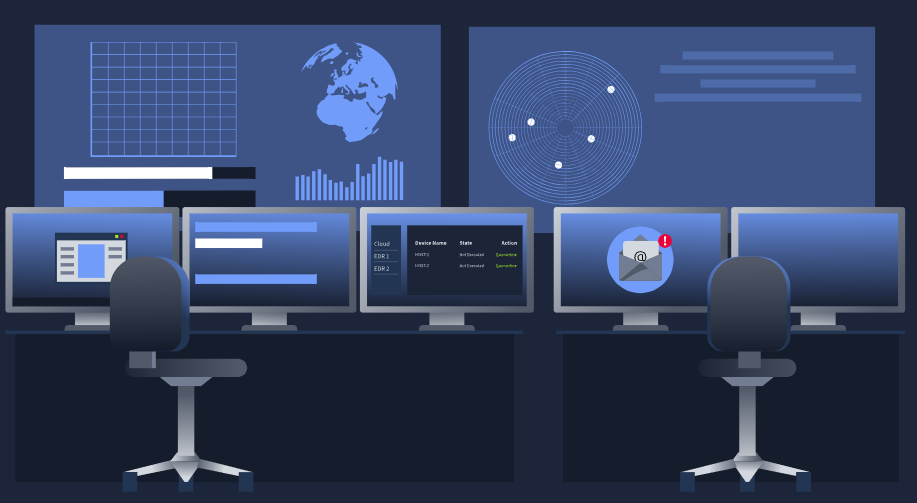To access material, start machines and answer questions login.

In this room, we will explore the world of defensive security. We will uncover how defensive security teams play a pivotal role in protecting networks and organisations across the globe.
Defensive security, known as the blue team, is used to prepare and proactively protect an organisation's IT infrastructure. It is concerned with two main tasks:
- Preventing intrusions from occurring
- Detecting intrusions when they occur and responding properly
Some of the tasks that are involved in defensive security include:
Answer the question below before proceeding onto the next task, where we explore what defensive security looks like within an organisation.
Which team focuses on defensive security?
The following tasks will explore the variety of areas within defensive security that work together to protect an organisation's digital assets. Let's begin with one of the core elements that make up a defensive security team.
Security Operations Centre (SOC)
A Security Operations Centre (SOC) is a team of cyber security professionals that monitors the network and its systems to detect malicious cyber security events. Some of the main areas of interest for a SOC are:
What would you call a team of cyber security professionals that monitors a network and its systems for malicious events?
Digital Forensics
Digital forensics is the application of traditional forensic science processes to digital devices. Digital forensics is used to preserve and analyse digital evidence to aide in the investigation of incidents, such as a breach. This may involve looking at information from:
An attacker deploys a piece of malicious code that does not save to the disk. What digital forensics technique would we use in this instance?
Incident Response
Incident Response is how organisations manage security events such as breaches, data leaks and cyber attacks. An incident response process is a defined set of stages to minimise damage, contain the threat and recover fast. The process will look like so:

Let's explore these in a bit further detail:
What phase of the incident response process involves providing "cyber awareness" training to employees?
The Scenario
Let us pretend you are a Security Operations Center (SOC) analyst for an organisation. You have been given access to the organisation's internal Security Information and Event Management (SIEM) tool, which gathers security-related information and events from various sources and presents them in one dashboard. If the SIEM finds something suspicious, an alert will be generated.
Simulating a SIEM
We have prepared a simplified, interactive simulation of a SIEM system to provide you with a hands-on experience similar to what cyber security analysts encounter.
To start this simulation, please click the "View Site" button below.
This action will open a "static site" on the right side of your screen. Follow the step-by-step instructions provided within the simulation to navigate through the events and locate the "flag." The flag will popup once you have completed all necessary steps.
What is the flag that you obtained by following along?
Ready to learn Cyber Security? Create your free account today!
TryHackMe provides free online cyber security training to secure jobs & upskill through a fun, interactive learning environment.
Already have an account? Log in

